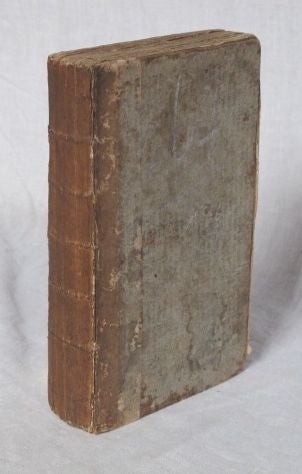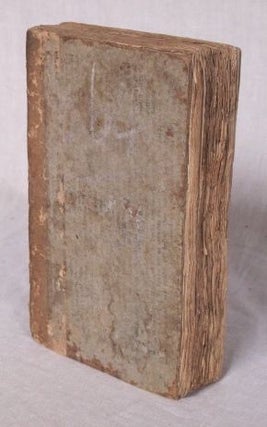The London Art of Cookery, and Housekeeper's Complete Assistant. On a new plan. Made plain and easy to the understanding of every housekeeper, cook, and servant in the kingdom... The Seventh Edition.
London: J. Scatcherd and J. Whitaker, 1792.
Octavo, 467, [5] pages. Illustrated, with twelve engravings of bills of fare, one for each month. Apparently lacking the frontispiece portrait of the author which is recorded for some copies of this printing but not all. Seventh Edition. An extremely popular late-eighteenth century cookbook, with recipes considered to be straightforward and useful, with interesting sections, including: Pickling, Collaring, Potting, Preparation of Hams, Bacon, &c., Elegant Ornaments for a Grand Entertainment, Made Wines, Cordial Waters, Malt Liquors, Culinary Poisons, and Necessary Articles for Sea Faring Persons. Despite its popularity, the book was ghost written by "the printer and hack Richard Johnson" (Lehmann, The British Housewife, page 79). "Farley's claim to fame has rested solely on his cookery book, although this is now known to be the work of a hack writer, Richard Johnson. Ninety per cent of The London Art of Cookery was compiled from the two culinary best-sellers of the eighteenth century, without ever acknowledging his female sources. These were Hannah Glasse's The Art of Cookery Made Plain and Easy (first published 1747) and Elizabeth Raffald's The Experienced English Housekeeper (first published 1769). The remaining 10 per cent of Farley's book came from several other eighteenth-century cookery books. Copyright laws did not cover the field at that time and other contemporary cookery writers borrowed material. Johnson appears not only to have used two-thirds of Glasse's book and half of Raffald's to compile Farley's book, but his copying technique involved changing the first and last lines of each recipe without seemingly improving the original text to any marked degree. His selection of excellent and often workable recipes, however, may well account for the book's popularity" (ODNB). Manuscript recipe To Make Currant Wine handwritten on rear free end paper. Title page showing some edgewear and light soiling. Original printer's binding with pale blue, sugar paper covered boards, and paper-backed spine; binding somewhat soiled and edgeworn. Untrimmed, in original boards, and rare thus. [Bitting, page 152; Cagle 675; Maclean, page 50; Oxford, page 114; Vicaire col. 355].
Price: $500.00


